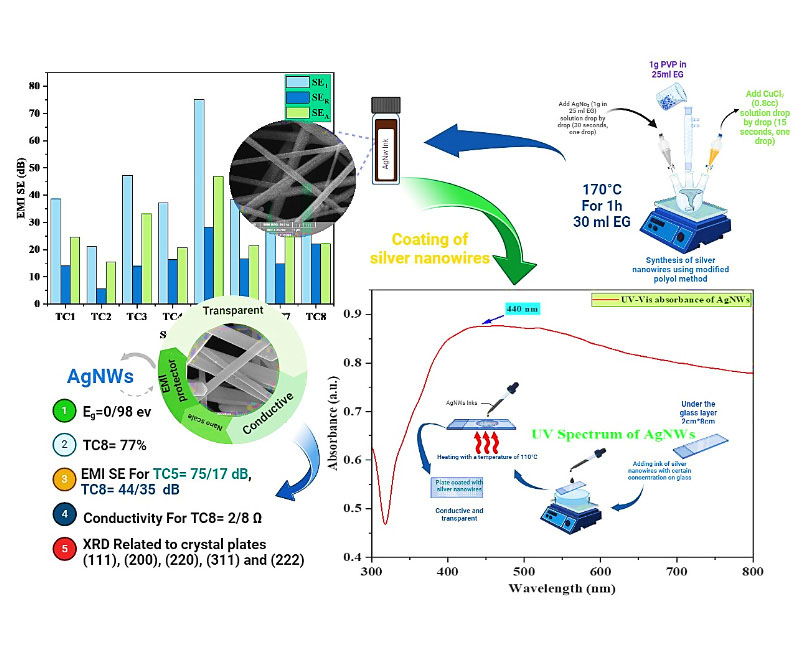Synthesis and characterization of silver nanowires with high aspect ratio for transparent coating applications
- 1 Faculty of Materials and Manufacturing Technologies, Malek Ashtar University of Technology, Tehran, Iran
Abstract
In this study, the polyol method was used to synthesize AgNWs to prepare of transparent and conductive coatings. The aim is to synthesize silver nanowires with a one-dimensional morphology and a diameter of less than 100 nm and to formulate a conductive ink containing silver nanowires with high stability under environmental conditions and an easy synthesis method. The experimental design and determination of random samples were performed using Design Expert software. In general, three variables of polyvinyl pyrrolidone (PVP) in the range of 0.06–0.8 g, silver nitrate precursor in the range of 0.04–2.64 g, and the molar ratio of PVP to silver nitrate were selected, and the constants were reaction temperature, reaction time, solvent (EG), and mixing rate. Random samples, proposed by the software, were examined. The synthesized AgNWs were characterized and evaluated using X-ray diffraction (XRD), field emission scanning electron microscopy (FE-SEM), scanning electron microscopy (SEM), and Fourier transform infrared analysis. FT-IR and DRS analysis used the Light transmittance coefficient. According to the results of XRD, FE-SEM, and SEM analyses, among the eight samples, S8 had a minimum diameter of 77.3 nm and an average length of 750 nm, and it was selected for further research. Then, the production of conductive ink was put on the agenda, eight conductive inks were made, and the optimal sample (S8) was identified at 3.75% by weight and the optimal molar ratio for ethanol and ethylene glycol solvents. The optimal ink was characterized and evaluated using visible-ultraviolet (UV-Vis), simultaneous thermal (TGA-DTA), and FE-SEM spectroscopic analyses. Conductive ink was then applied to the glass substrate. In addition, the EMI shielding efficiency in terms of dB using the surface electrical resistance of the conductive ink applied to the S5 sample was found to be 75.17 dB in the best case. Finally, the electrical resistance, transparency, and EMI shielding efficiency of the S8 sample were obtained as 2.8 Ω, 77% and 44.35 dB.
Downloads
References

Copyright (c) 2024 Ali Borchloo, Reza Shoja-Razavi, Hamed Naderi-Samani

This work is licensed under a Creative Commons Attribution 4.0 International License.
Copyright
Authors are the copyright holders of their published papers in Synthesis and Sintering, which are simultaneously licensed under a Creative Commons Attribution 4.0 International License. The full details of the license are available at https://creativecommons.org/licenses/by/4.0/.
All papers published open access will be immediately and permanently free for everyone to read, download, copy, distribute, print, search, link to the full-text of papers, crawl them for indexing, pass them as data to software, or use them for any other lawful purpose without any registration obstacles or subscription fees.












